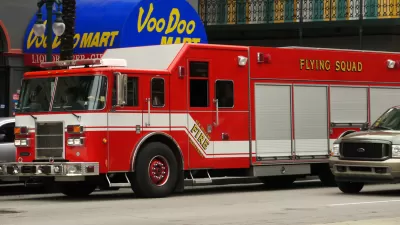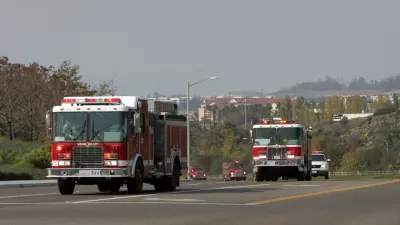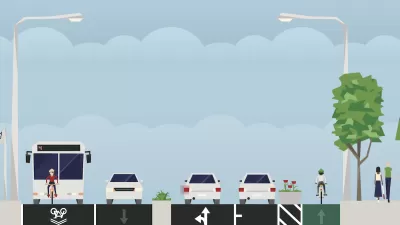A dense network of streets creates the conditions for faster response times. Better pedestrian and automobile safety and excellent response times is a win-win. So why are fire officials undermining this network with calls for wider streets?
Fire officials often push for wider streets so that their biggest trucks can move more swiftly — but the wider streets lead to more deaths and injuries. They do this, supposedly, in the name of safety.
It shouldn't be too difficult to see that if fire protection policies add to a public safety problem of much greater magnitude — i.e., traffic injuries and fatalities — a different solution must be found.
For comparison, 2,500 civilians die and 16,000 are injured annually in building fires in the US, while 33,000 people die and 2.3 million people are injured in automobile crashes.
This is a real problem for communities across the US. We've been reporting on this issue since 1997, when New Urban News (the predecessor to Better! Cities & Towns), reported on a study by traffic engineer Peter Swift and collegues that looked at injuries and deaths over an eight year period in Longmont, Colorado, from automobile accidents and fires. The chance of a resident being injured goes up dramatically with each increase in street width, Swift determined. According to the article:
FULL STORY: Bad call: Wide streets in the name of fire safety

Alabama: Trump Terminates Settlements for Black Communities Harmed By Raw Sewage
Trump deemed the landmark civil rights agreement “illegal DEI and environmental justice policy.”

Study: Maui’s Plan to Convert Vacation Rentals to Long-Term Housing Could Cause Nearly $1 Billion Economic Loss
The plan would reduce visitor accommodation by 25% resulting in 1,900 jobs lost.

Planetizen Federal Action Tracker
A weekly monitor of how Trump’s orders and actions are impacting planners and planning in America.

Wind Energy on the Rise Despite Federal Policy Reversal
The Trump administration is revoking federal support for renewable energy, but demand for new projects continues unabated.

Passengers Flock to Caltrain After Electrification
The new electric trains are running faster and more reliably, leading to strong ridership growth on the Bay Area rail system.

Texas Churches Rally Behind ‘Yes in God’s Back Yard’ Legislation
Religious leaders want the state to reduce zoning regulations to streamline leasing church-owned land to housing developers.
Urban Design for Planners 1: Software Tools
This six-course series explores essential urban design concepts using open source software and equips planners with the tools they need to participate fully in the urban design process.
Planning for Universal Design
Learn the tools for implementing Universal Design in planning regulations.
Caltrans
Smith Gee Studio
Institute for Housing and Urban Development Studies (IHS)
City of Grandview
Harvard GSD Executive Education
Toledo-Lucas County Plan Commissions
Salt Lake City
NYU Wagner Graduate School of Public Service





























